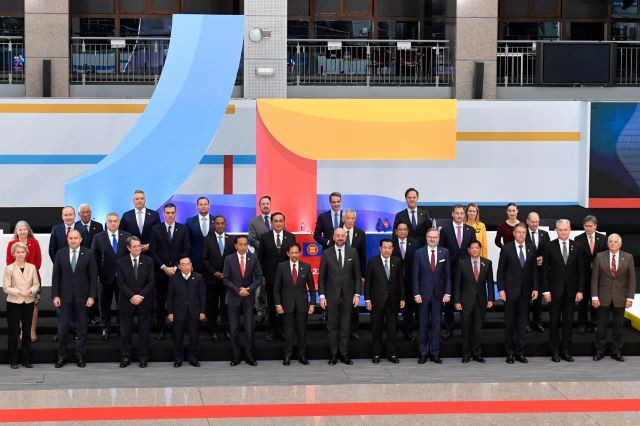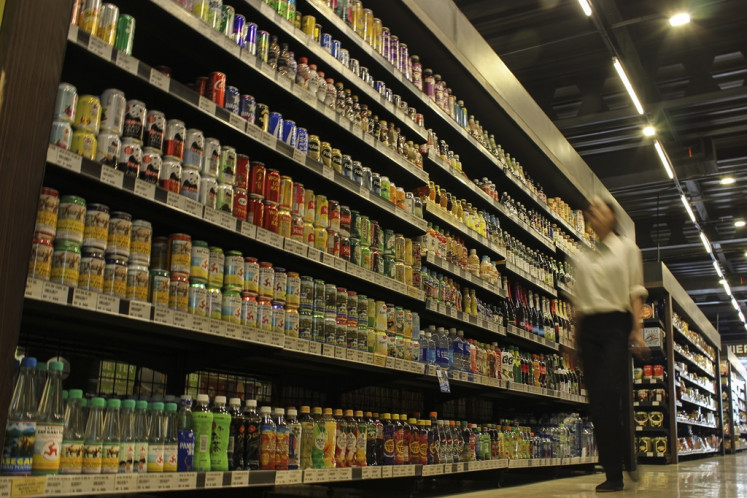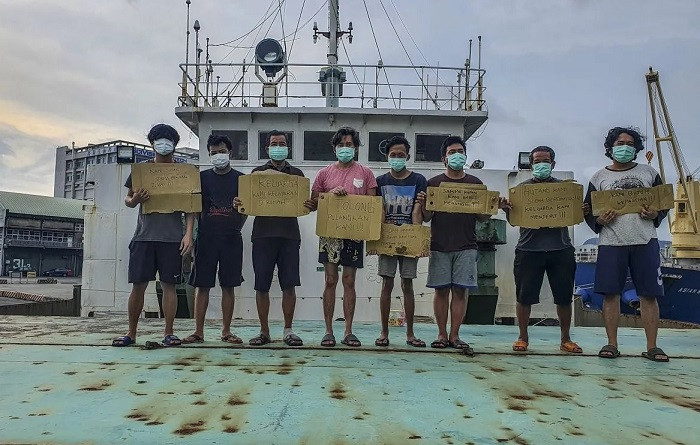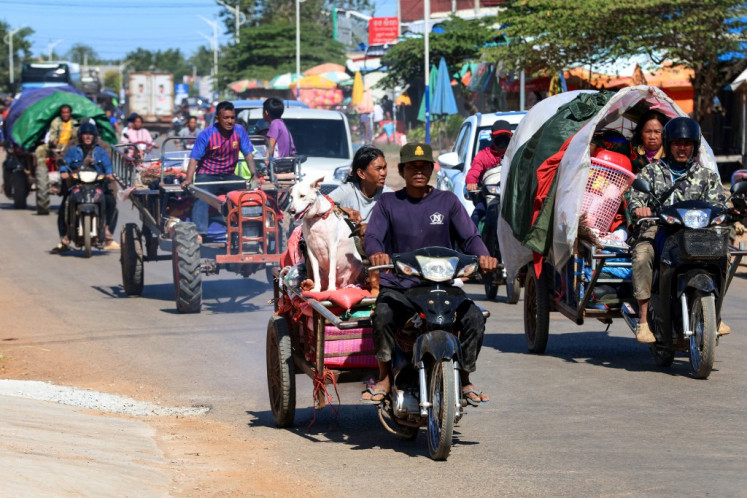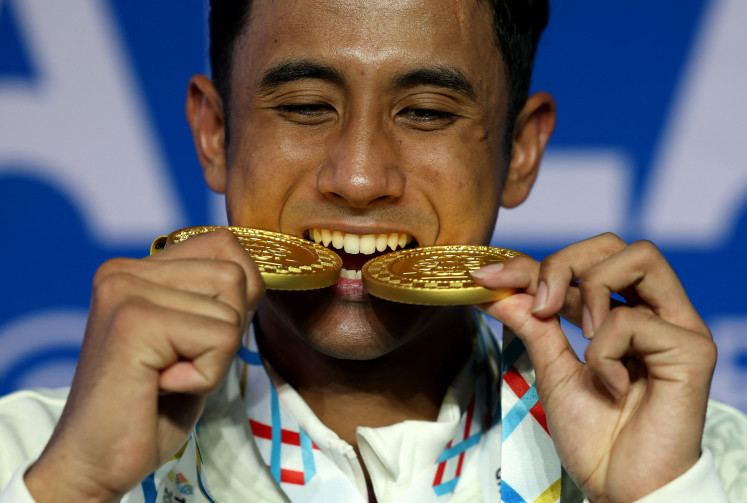Popular Reads
Top Results
Can't find what you're looking for?
View all search resultsPopular Reads
Top Results
Can't find what you're looking for?
View all search resultsASEAN needs both an EU FTA and zero-emissions community
ASEAN needs to conform to the EU’s trade policy, which is rules-based and bound by its commitments to sustainability, labor rights and democratic values.
Change text size
Gift Premium Articles
to Anyone
I
ndonesia’s renewed drive to finalize its long-delayed trade agreement with the European Union, which is formally known as the Indonesia-EU Comprehensive Economic Partnership Agreement (IEU-CEPA), by the first half of this year is more than a bilateral milestone. It is a call to action for ASEAN.
As Southeast Asia’s largest economy edges closer to sealing its trade pact with the EU after nearly a decade of negotiations, Jakarta’s move underscores an even bigger question: When will ASEAN itself secure a region-wide Free Trade Agreement (FTA) with the EU?
The stakes are high. The EU is the world’s second-largest economy by gross domestic product (GDP) and a major player in global trade, investment and standards-setting. ASEAN, meanwhile, is home to over 680 million people and is rapidly ascending as a global manufacturing and digital services hub.
Yet despite strong complementarities, negotiations on a bloc-wide ASEAN-EU FTA have stalled for over a decade, mired in technical complexity, political sensitivity and asymmetries in development.
Now, as Indonesia prepares to conclude its CEPA, the timing is ideal to reignite the regional ambition. But this will require far more than goodwill. ASEAN must adopt a strategy that is harmonized, realistic and courageous.
First, close the internal development gap of ASEAN. The bloc’s primary challenge lies within the sharp disparities between its member states. While Singapore, Vietnam and Malaysia operate highly integrated export economies, others like Cambodia, Laos and Myanmar continue to face institutional, regulatory and political constraints.
From the EU’s perspective, negotiating with ASEAN as a bloc has always been problematic precisely because of these inconsistencies. The EU’s trade policy is rules-based and bound by its commitments to sustainability, labor rights and democratic values. Without uniformity in standards, the EU has often opted for bilateral deals, as seen with Singapore, Vietnam and now Indonesia.
If ASEAN wants to present a united front, it must accelerate the harmonization of trade policies under the ASEAN Economic Community (AEC). This means aligning tariff schedules, simplifying non-tariff measures and most importantly, building capacity among less developed members to meet EU standards.
In this regard, Indonesia’s CEPA can serve as a template for others, demonstrating how to balance national interest with international commitments.
Second, green trade is no longer optional; ASEAN must institutionalize it. This, too, is critical.
The EU has made sustainability the centerpiece of its external trade policy. Instruments like the Carbon Border Adjustment Mechanism (CBAM) and the Deforestation-Free Products Regulation (EUDR) are not mere side policies; they are hardwired into how the EU grants market access.
This presents both a challenge and an opportunity for ASEAN. Key exports such as palm oil, rubber, timber and coffee now face scrutiny over environmental impact.
Unless ASEAN economies embrace traceability, transparency and sustainable sourcing, they risk losing preferential access, not just in the EU, but in any market that adopts similar green trade frameworks.
To move beyond fragmented national efforts, ASEAN should launch a regional framework. Namely the ASEAN Zero Emissions Community (AZEC), in co-leadership with Japan. The idea is already gaining traction.
Former Japanese prime minister Fumio Kishida, in a strategic visit to the ASEAN Secretariat in Jakarta in 2023, held talks with ASEAN Secretary-General Kao Kim Hourn to promote decarbonization and cross-border energy innovation. Kishida’s follow-up visit to Malaysia to meet PM Anwar Ibrahim, the current ASEAN chair, highlighted Japan’s readiness to support this bold regional initiative.
AZEC, if formalized, could be ASEAN’s long-overdue answer to Europe’s Green Deal. It would allow ASEAN to set regional targets for emissions, promote clean technology transfers and ensure that ASEAN’s exports can comply with EU and global climate-linked trade standards. Moreover, it would institutionalize ASEAN’s voice in the global sustainability discourse, which so far has been largely shaped by the West.
Third, leverage bilateral opportunities for regional convergence in ASEAN and EU.
The progress of Indonesia, Singapore and Vietnam in negotiating bilateral trade deals with the EU should not be seen as undermining ASEAN’s collective aspirations. Rather, they offer building blocks toward a broader, multilateral outcome.
ASEAN can adopt a “docking mechanism”, wherein member states gradually align with common trade disciplines, much like how the European Free Trade Association (EFTA) worked with the EU. In this way, a flexible yet forward-looking FTA can emerge over time, accommodating diversity while upholding unity.
Equally important is the adoption of cumulative rules of origin, allowing ASEAN-wide supply chains to qualify for tariff reductions under the EU's system. This would incentivize deeper regional production networks, especially in textiles, electronics and automotive sectors.
Fourth, institutionalize strategic trade diplomacy as soon as possible. Despite being a dialogue partner of the EU since 1977, ASEAN has not institutionalized a dedicated trade negotiation track with Brussels. This is a critical gap.
ASEAN must appoint a special envoy for ASEAN-EU Trade, supported by a full-time secretariat, to liaise with the European Commission. Regular business forums, trade expos and public-private roundtables must become fixtures in the ASEAN-EU calendar.
Additionally, ASEAN should engage in Track II diplomacy, bringing together think tanks, academics and civil society organizations to align expectations and smooth over normative disagreements on issues like labor, digital rights and democratic governance.
Brussels, unlike Washington, is patient, procedural and policy-driven. ASEAN must meet it on those terms and not rely solely on informal networks.
Finally, ASEAN must summon the political will. No trade architecture can be built without political determination. The ASEAN chairmanship under Malaysia is a rare window to reboot talks.
Anwar has consistently voiced support for economic justice, multilateralism and climate-conscious development. These align well with EU values, as well as with Japan’s offer to codevelop AZEC.
Other ASEAN leaders must also champion this agenda not just for national pride but also for regional resilience. As Donald Trump’s second term in the United States continues to upend global economic stability through erratic tariffs and trade threats, the case for ASEAN-EU cooperation has never been clearer.
In an age where the global trade order is fragmenting, ASEAN must show it can forge new alliances that reflect both strategic autonomy and global interdependence.
The IEU-CEPA should not be an end in itself. It should mark the beginning of ASEAN’s collective leap toward the EU. What’s at stake is not only preferential access to a US$17 trillion market, but also ASEAN’s credibility in responding to the green transformation reshaping the global economy.
With AZEC as its new environmental pillar and a revived commitment to regional trade diplomacy, ASEAN can finally cross the long bridge to Brussels, with Japan as a coarchitect and Europe as a willing partner.
***
The writer is a professor of ASEAN studies at the International Islamic University Malaysia (IIUM) and a visiting faculty member at the University of Malaya.

